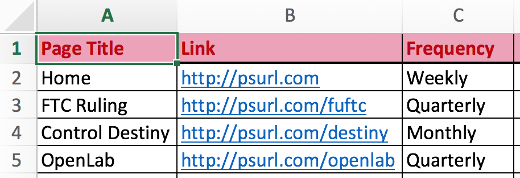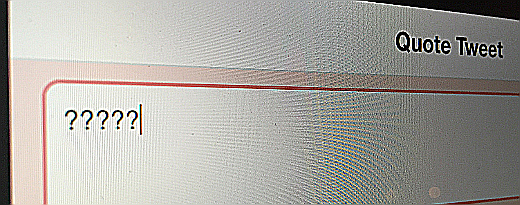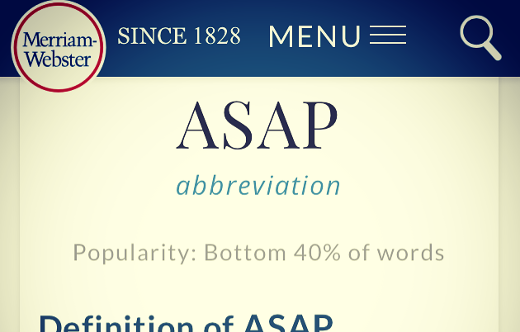3 Tips On Sharing Content For Reluctant Twitter Users
I’ve encountered a recent phenomenon of people who are new to using Twitter. Some are businesspeople who feel they need to use it but don’t quite embrace it. Some are employees of companies who are asked to share content on behalf of the company but don’t use it for much else. Then there are others who have been told they should be using it but are not comfortable as compared to other social media platforms.
These people are what I consider “reluctant” Twitter users. I’d like to offer them – and everyone else – some straightforward strategies to gain familiarity and comfort with this social network.
Let’s start with simply sharing content from others. When it comes to sharing content on Twitter, I offer 3 tips to help you through the process. But first, let’s define what “sharing” is. It is the process of posting, or tweeting, information you want to inform others of. It could just be the text of a tweet, a link to a Web page, a picture, or a combination of all of these.
These tips are:
1. Identify something of interest to share with others – Where this may be obvious to some of you reading, I know for others it is not. There is no “perfect” content – it can be any of the formats mentioned above.
When you think of who to share with, I am referring to the people who are following you, plus any Twitter users, providing your profile is public. As for the latter, people can search all tweets (known as the public timeline) for any topic they are looking for. They may find one of your tweets, and could like or retweet it, thus sharing it to their followers. So when you see someone you don’t know like something of yours, this extension to your network is why.
2. Use the Tweet button – Now that you have identified what, how do you actually share it? The ideal way is by clicking a button or link which will open up a text box and format a tweet for you. With Twitter now being around for over a decade, most Web sites, news media, blogs, etc. have such a link or button, as well as sharing buttons for other social media platforms (e.g. Facebook, Pinterest).
That being said, there are many sites that do not offer such a button (like here at The Hot Iron). For these, you can simply copy and paste a link into the box when you go into type your tweet. You also can use built-in sharing functions on your Web browser or mobile devices to compose a tweet.
3. Personalize it – Before you press the tweet button, personalize what you sharing. Personalizing allows you to add your point of view, your reason, your whatever to what you share. Personalization can also include the Twitter username of someone to send the tweet to as well as a personal message to them or anyone else reading it. You can also take personalization to the next level by adding keywords or hashtags (keywords preceded by the # symbol) to what you write, as people may be searching Twitter for content with these words.
Like with anything, start someplace and the more you do it, the more comfortable you will be. Following these 3 tips will hopefully make this as easily done as said. The next time you find an article or anything else you want to share on Twitter, try these tips and let me know if they work for you or not.
Deconstructing Tweeting Content
Sharing content is at the core of the term social media – being out there and social by sharing content from a media source. Any new activity takes time – more for some than others – but with practice you will get comfortable. Having some guidelines can help you get over the hump. In time, you will gain a level of savviness with using Twitter.
This is from The Hot Iron, a journal on business and technology by Mike Maddaloni.
Did you enjoy this? Subscribe to The Hot Iron by RSS/XML feed or Read by Email.
Blogging • Business • Social Media • Strategize • (0) Comments • Permalink
Why I Don’t List My Birthday On LinkedIn
Happy Birthday! Or should I say, Happy Birthday?
When you hear those words, what do you think of? A child’s birthday party? A co-worker gathering for birthdays for the month? Or a recurring line from a Christmastime cartoon?
Or perhaps do you think of an onslaught of people, some you may not even know well, sending you those 2 words in a rote fashion over a social media platform?
It is for this latter reason why I don’t list my birthday on LinkedIn.
Sincerity vs. Obligation
Adults have a variety of traditions when it comes to their birthdays. Some don’t acknowledge them at all, some dog you with it like it’s a national week of celebration, and most are somewhere in between. For myself, my immediate family will acknowledge it, I get a few messages from those cousins who keep track of everyone’s birthdays, and that’s it. And I am fine with that.
As social media platforms have evolved, they have asked for more and more information about you. This includes LinkedIn, which most regard as business social media platform and, ideally, above the fray of such frivolity. However, that’s not the case, as they ask for the date you entered this mortal coil. Capturing this in their databases, now owned by Microsoft, is not the extent of it, as they now share your birthday with your connections on that unique day – as you go through your feed seeing who has a new job or work anniversary, you will also see who is marking the day as surviving another year on this planet.
This compels people to “like” or go as far as to wish you a Happy Birthday with a canned greeting. On occasion someone, likely a person who actually knows you, may put a more personalized greeting, but for the most part the obligatory methods are the ones which are used. On the surface this may seem nice – look, everyone’s wishing me a Happy Birthday – but it is insincere, and for some, intrusive, as many people don’t like it highlighted.
Just Say No As I Do

If you want to rise above the fray of the frivolity of empty birthday greetings on LinkedIn, there are 2 steps you need to follow. First, don’t list your birthday. Under your contact info on your profile page, simply remove your birthday, as shown above. Second, you can turn off notifications of those who still have their birthday listed on the social platform, so you won’t be inundated with requests to wish them something that may not want to hear. The image at the top of this post is what this looks like on the LinkedIn notifications page.
But Wait, What About in The Name of CRM?
As some of you are reading this, you may be thinking I am missing the point of why LinkedIn is asking for this information to begin with. My guess is some of you who are in sales or have businesses may think birthdays are a great way to engage with customers and provide an added level of personalization, and taking their birth date from LinkedIn to your own customer relationship management system is a natural step.
Think again. Just because someone has their birthday listed on a social media site, it’s not because they consciously entered the information. Other social media platforms like Facebook and Twitter ask for more information than – if you think about it – you should comply with. Entering your birthday may be as natural as entering your email address or even your name, as you don’t think twice about it. Just because it’s listed there for a person, don’t assume you personally have permission to do with that data what you will. The platforms likely have it covered in their terms of use though. The best way to alleviate this is to just not do it.
Deconstructing Birthdays in LinkedIn
Birthdays are personal. Sending birthday greetings to a person you do not know well, just because you saw they entered their date onto a social media platform, can be awkward. Especially when using a business-focused social platform like LinkedIn, pause should be taken when acknowledging or using this information, as the person who entered it may not be aware of how it would be used or shared.
Do you have your birthday listed on LinkedIn? On other social media platforms? I welcome your thoughts on this in the comments to this post.
This is from The Hot Iron, a journal on business and technology by Mike Maddaloni.
Did you enjoy this? Subscribe to The Hot Iron by RSS/XML feed or Read by Email.
Business • Social Media • Strategize • Technology • (2) Comments • Permalink
The Simplest Web Site Content Plan

Quick – how accurate is your Web site?
My deepest apologies if I caused you to have anything from a puzzled look on your face to a panic attack. But if you own a Web site and have any sizable amount of content, it should be periodically reviewed to see if it needs to be updated.
Where there are tools available to help this – perhaps within your content management system (CMS) where you update your content, or external, third-party tools, I’d like to share a basic, straightforward and low-tech way to remind you to review your content.
From Louisville With Love
In a past role I managed the technical environment for our Web site and Intranet, working with staff from Marketing together as the Web team. One day someone from the facilities department stopped by my desk, and the brief conversation we had went something like this:
Julie (not their real name): “Hey, Mike.”
Me: “Hey, Julie”
Julie: “You know the Louisville, Kentucky office moved, right?”
Me: “Yea, I saw that someplace… why are you asking me?”
Julie: “Because the old office address is still on the Web site – you do something with that, right?”
After that thrilling conversation, I got on the phone with my marketing counterpart (we’ll call her Natasha) and has basically the same conversation with her, however I said Julie’s lines. This was followed by a few choice adult words by both of us, then Natasha proceeded to make the change to the Web site.
Maintaining With a Plan
Still on the phone, we both could hear each other exhale. We were glad we were able to make the change quickly, then the conversation continued around how much other outdated content was out there, updating it, and a plan to do both of these tasks moving forward.
As with many Web sites out there, content has many owners. The marketing teams for each product managed their own content, and Natasha was responsible for the overall “corporate” content. We didn’t have a feature-rich CMS for the site that could alert us to “expired” or “expiring” content, nor were there many decent comprehensive content tools at the market at the time – and we looked – so we had to come up with our own solution.
What we came up with was straightforward yet highly effective, and it came about with these steps.
1. First I listed all pages of the Web site and put it into a spreadsheet. As we had a Sitemap page it made this task easy.
2. Natasha then took the spreadsheet and added a column called “frequency” and proceeded to make the frequency of how often page content should be reviewed (e.g. weekly, monthly, quarterly).
3. I took a look at her revised spreadsheet and made suggestions regarding the frequency – remember, I am much, much more than just a technologist!
4. Natasha, using the final spreadsheet as a guide, created calendar alerts with links to the pages as reminders to review the content.
That was it, and it worked.
Of course some content would be reviewed more frequently, namely when it was modified or other business triggers occurred. The point of the above exercise though was to ensure that, on a regular basis, all of the Web site content would be reviewed for accuracy. In addition to this, I would perform regular link checks to ensure the content was technically connected.
What Works For You?
As you are reading this, I hope you are thinking of the content of your Web site, as there is no time like the present to be thinking about it! In addition to the site itself, your extended Web presence includes your social media profiles and feeds. As it’s easy to tweak one or more and forget about the others, perhaps this “detached” solution of using your calendar will work for you too?
Deconstructing a Web Content Plan
In this hyper-speed world of content development, it’s not unusual to have inaccurate or incomplete content out there, exposed, for all to see. By coming up with a straightforward and highly usable plan, you will be able to get ahead of long-standing errors and omissions in your Web presence.
This is from The Hot Iron, a journal on business and technology by Mike Maddaloni.
Did you enjoy this? Subscribe to The Hot Iron by RSS/XML feed or Read by Email.
Blogging • Business • Strategize • Web Design • (1) Comments • Permalink
Thriving In A Culture of ASAP
When you see “ASAP” in an email or text, do you cringe? Sadly most of us do – I do – as the acronym, which is made up of pleasant words, has ended up becoming a harsh term.
Looking up the definition of ASAP in the dictionary you see it stands for “as soon as possible” which is, as I said, pleasant. But thinking back to the cringe-causing event (or more likely events) that come to mind when you read the opening of this post, do you think the person typing ASAP really meant “as soon as possible?”
Hell no I can hear you say! Rather than asking you to do something as soon as it is possible for you to do so, aren’t they really asking, “drop all you are doing and respond to this right this fucking second!” Let’s be honest, this is what should be listed in the dictionary as the true definition of what ASAP means, and not just the words behind the acronym.
The Culture of ASAP
Most organizations have a culture of ASAP. In this hyper-connected world where any information can be had in seconds, we have a heightened expectation that seems to come with a narrowing window as time goes on.
Note I say “any” information and not the “right” information or even accurate information, or any other qualifying adjectives that requires strategic thinking. This has no place in the culture of ASAP, as everything is being responded to fast and furiously. Even if the answers or responses have already been prepared and presentation in reports or dashboards, the person slinging ASAP around has no time for these tools and want the answers from you and right now, though ironically they may be the owner of said reports and dashboards.
Succeeding Under ASAP
It goes without saying that to get beyond a culture of ASAP takes leadership. Part of that leadership is in communications – sharing expectations of greater foals and what may be asked of a team. As well, the team is given time to ideate and strategize the big picture down to their area of expertise and can thus be proactive in using information sources or channels.
In the absence of that leadership, there is still the ability to make gains and efficiencies yourself to make your life easier. Simply documenting ASAP requests is a great start, by recording overall what is being asked, looking for trends, and comparing it to what you are doing now. Incremental improvements to processes or reporting can be made as a result of this analysis. As requests come in, make sure you are clear as to what is being asked and – if appropriate – why it is being needed. The “why” can influence “what” is created. These latter steps are things I do on a routine basis to make both the collection of data and reporting of information much more efficient.
Deconstructing ASAP
Priorities in business change frequently and requests can come in that need to take top priority. With some analysis and a small series of successful changes, dealing with ASAP can be made much less harsh, as it is likely to not go away altogether.
This is from The Hot Iron, a journal on business and technology by Mike Maddaloni.
Did you enjoy this? Subscribe to The Hot Iron by RSS/XML feed or Read by Email.
Business • Strategize • Thrive • (2) Comments • Permalink
I’m A Teacher
Who would’ve thought a wedding reception in Indianapolis would be where I’d realized something that has helped shape the path I’ve taken with my career?
It was following the wedding of my friends Jen and Bill at their reception where it happened. Bill was making a speech, and though I don’t remember it verbatim (sorry, Bill!) he began talking about teachers, as he is one himself. Then he asked everyone in the room who was a teacher to stand up.
And I stood up.
Not only did I stand up, but nobody snickered or asked me to sit down either. This is when I first realized I am a teacher.
Define Teacher
When I lookup the definition of the word teacher in my favorite book of words, it reads, “a person or thing that teaches something; especially: a person whose job is to teach students about certain subjects.” This is why I have never thought of myself as a teacher, namely as I have never had a title with the word “teacher” in it before. My job titles have had “consultant,” “manager” and “president” and other business titles – but never teacher.
As I look at my career present-day and past, I have always been teaching in some capacity. There is teaching in the formal sense, were I have developed training and offered classes in the US and internationally on Web application and their underlying technology, I have also developed Web portals to host and deliver these materials. Then there’s teaching in a more advisory role, where I am consulting with people on business decisions and how to apply technology to help solve them. In some cases I am coming in with the answer after strategizing on it, other times I am troubleshooting in real-time to come up with a solution.
In the above cases, teaching is pervasive. I’m not simply saying to a client, “do X,” rather I am explaining what “X” is, answering their questions on “X,” informing them about “y” and other letters of the alphabet, and ensuring they have all the information they need to make an informed decision.
Educating vs. Selling
Some of you reading this may be saying, “yea, but aren’t really selling something to people in these cases, not teaching them?” Part of that answer is certainly yes, but when someone or some corporation is shelling out a lot of money, they need to understand the why, not only from a pure dollars-and-cents point-of-view, but with regards to how to best leverage and use it among other aspects. Teaching of course is an important role for sales and account people too, not just for the technology strategist like myself.
This is of course not to say that everybody is a teacher (I don’t recall everybody standing up at that wedding reception). Many don’t like to or want to teach. Each to themselves, but for myself I have always found this as a very rewarding aspect of what I do, past and present. Not to mention making my job easier by working with a well-informed client.
Deconstructing Being a Teacher
There are many more people out there who are teachers than realize it. We always envision a teacher as someone heading a classroom in elementary or high school, and has the word “teacher” in their title. I am not saying I am a replacement for them, rather someone complimenting their contributions to society with my own.
And you can give me an apple anytime!
This is from The Hot Iron, a journal on business and technology by Mike Maddaloni.
Did you enjoy this? Subscribe to The Hot Iron by RSS/XML feed or Read by Email.
Business • Technology • Thrive • (1) Comments • Permalink







